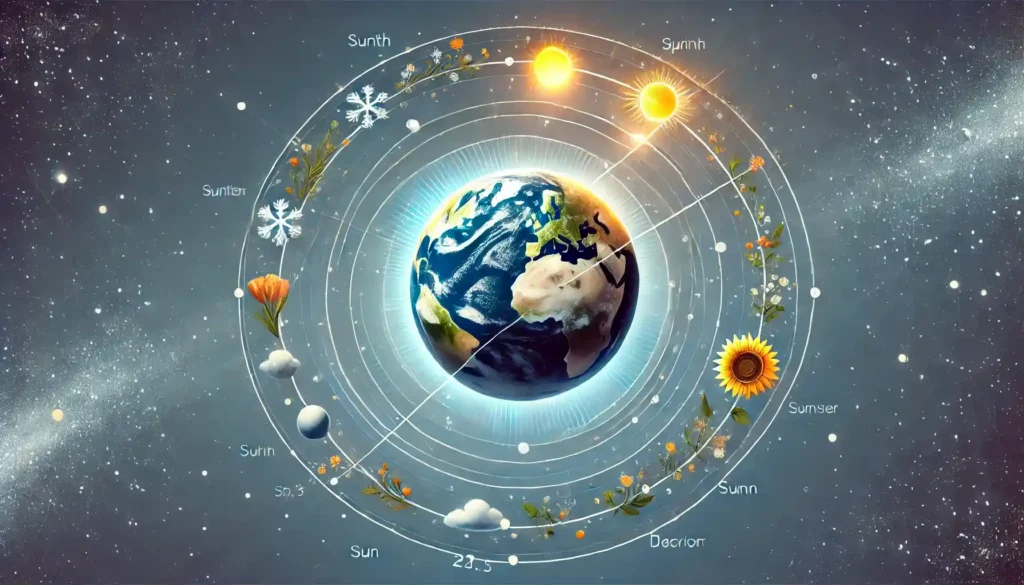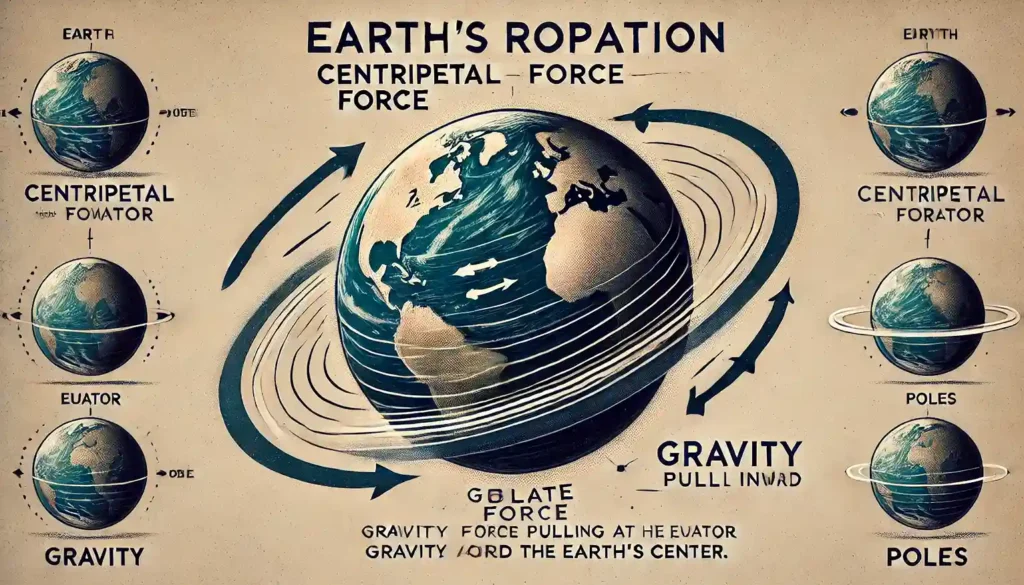Hey people! One undeniable fact that everyone knows about living on Earth is its constant rotation but not even one of us takes it into consideration; it’s indeed the world’s top-most planet. If anyone experiences that, neither is it in terms of rotation nor being thrown outside! What makes this so possible?
Not just the science of how the Earth rotates but also how one falls under basic physics concerning how our world works; this blog is going to explore the science of Earth’s rotation, then the difference between how we never feel the spinning and gravity binding us. Besides inertia, Earth’s orbit and everything else should go into explaining how those contributing factors keep life going onto our planet.
Let’s simplify this!
Actually, How Fast Does The Earth Rotates?
Distance apart is also considered when measuring changes among the dimensions of the distances using units on an axis. All this ultimately boils down to the physical way revolving earth in rotation. Rotating Earth simply implies how the Earth revolves around the specific axis, always staying at one line. Now, run a line between North and South Pole; imagine that axis as an imaginary line. Now, looking upon the globe from the North Pole, the whole earth rotates left to right about once every twenty-four hours; hence it is termed “rotation” because it brings us night and day as the shadow of the earth advances across the sun.
Now, if your region of the Earth is facing the Sun, it is midday.Your region of the Earth is oriented with its back towards the Sun when it is nighttime.
Among all features that are purely natural, this rotation happens to be perhaps one of the most significant and ceaseless phenomena inasmuch as life goes by on our planet. It should be noted that the rotation of the Earth about its axis-that axis being the equator-is at the rate of about 1,670 km/hour (1,037 mi/h)! However, at night and day, we do not feel the Earth’s rotation on this axis, nor indeed travel up into space at that velocity. But, why?
Gravity’s part in preventing us from falling off
It’s a very strong yet simple very simple force that never lets a person fly away off the surface of the earth, even when the earth rotates very fast.
Gravity attracts all objects towards each other. It pulls everything to the surface of the globe with a force so strong that it could hold human beings, animals, buildings, and seas. No matter where you might find yourself on this globe, gravity is that inescapable force which keeps you tethered to the earth.
How It Operates
Gravity is the attraction that draws everything towards the center of the planet. The very force of this attraction does not allow even the rotation of the earth to slow down the effect. As a result, everything located here on Earth remains fixated on this planet without anything flying off into space.
Basically, gravity pulls you down-inward toward the center of the earth.
This much stronger gravitational force overrides anything in the rotation of earth.
What Makes Earth Out of Hands?
Next question pops out of mind: “Why not feels earth moving it is rotating in such speed?” This is something that people have got mixed up for a long time. To be answered, it’s two words: inertia and everything around us.
Inertia is the property of matter that keeps an object moving or still until an outside force applies it.
When the earth revolves, all objects in the worlds: you, air itself, the oceans, and the buildings move along with it. It exists without a jolt or signal to the body that something is in motion because everything turns at the same slow and constant rate.
Just imagine yourself right now onboard a moving train, not even at a really high speed. You know you would not get dragged forward under that speed because all things in your vicinity are going at the exact velocity.
You can only experience motion when the train has sudden acceleration or deceleration. In the same way, we cannot notice the rotation of the Earth because it is continuous.
Relative Motion:
Because we don’t have any reference point in our daily experience by which to see or sense motion, we can barely muster a thought that the Earth is itself rotating.
We do not notice:
motion because all objects in the universe appear to be moving along at the same speed with us, the clouds, the earth, and the air. The only time when you will be able to see the Earth rotate in reality will be when you are an astronaut floating in space.
The Movement of The Earth Around The Sun

- Moving around the sun, the earth does rotate on itself and causes a day-and-night period. Revolution, which is responsible for changes in the seasons, is the act of going around the sun. A year is defined as the time it takes these heavenly bodies to revolve fully for one circuit around their star, which is 365.25 days long.
- That is why an extra day is added to the calendar every four years. But within that whole circle, there is also a quarter-day that makes up the leap year.
- Earth is no globe, in fact, but ‘oval-shaped’ in the sense that it moves in an elliptical way around the sun. While travelling around the star in a fixed radius called the Earth’s orbit, the length of the distance the Earth is to the Sun varies.
- This difference is, however, tiny enough not to really heat the entire earth.
- The temperature as well as the seasons are affected by the tilt of the earth in its axis.
Axis of Earth Inclination Tilted
The rotation axis of the earth lies slanting to the orbit of the earth by 23.5. Therefore, it wouldn’t be said to be exactly the same as the plane where the earth revolves. It is this tilt that effects changes in seasons. Over the course of the year, as the earth orbits the sun, the different regions of the earth are illuminated from the sun.. For instance,
- While winter grips the Northern Hemisphere, summer envelops the Southern Hemisphere; for, if one hemisphere tilts toward the Sun, the other hemisphere tilts away from it.
- The change of season resulting from the earth’s rotation around the sun reflects a cycle that affects all aspects of life on earth, from temperature to weather to daylight.
The forces centripetal Gravity and Rotation Symmetry

Another such interesting thing about a planet’s movement is the small force which it can produce-the outward force or centripetal.
- Centripetal force is one which tends to throw objects outside the point of rotation, whenever a body is revolving around a center, e.g. planet. When you tie a ball to a string and release it, the ball moves in a very irregular way.
- Earth’s rotation generates this force, and it is strong at the equator, where the globe spins very fast. Yet this force is far smaller than Earth’s gravitational force on its surface. Gravity and centripetal force are indeed the two forces by which we feel ourselves firmly anchored to the ground, but there is still the force of gravity on the moving outward is the effect of the force of rotation.
- This flattening towards poles and widening towards the equator, the gravity counteracts with this force. The planet is completely spherical in shape.
What if the motion of the planet could be stopped?
So it would stop rotating around its axis some day. Of course, these are disastrous results. With abolish spinning action, Earth’s climatic changes, oceans, and the atmosphere would be changed. Here’s what could happen:
“The turning would stop and throw into everlasting daylight the whole Eastern Hemisphere and into everlasting night the rest of the world. Two ends of the wire would be burning hot and freezing over.”
The oceans would Move
The continents would not now be flung away into space, sulfur, from the centrifugal force of earth rotation, as into the sea. Water, in fact, should flow by the poles forming new oceans again, creating a shift in the coastlines significantly.
The Atmosphere would be affected
Still, a standstill of Earth would not stop the atmosphere. There would then be hurls of hugely powerful gales, sometimes exceeding hundreds of miles per hour, whipping everything in their paths.
Earth’s Magnetic Field
The home device that is Earth’s rotation, the magnetic field encircling the planet, protects it from dangerous solar activities. In case one part of this device is not rotating, the complete magnetic field may get lost, which may trap the planet under a radiation bath because of space.
Fortunately
however, even though its rotation is gradually slowing due to moon forces, the Earth will not stop rotating in the near future, so during the following generation, we may experience this very minor variation in about a billion years.
Next time
While gazing up at the endless sky or feeling the warm rays of the Sun on your face, do understand that there is quite an interesting science ensuring you.
Conclusion
The science of Earth’s rotation is the culmination of the December natural force pushing into the present world. For example, without gravity, inertia, centripetal force, and tilt of the earth, the balance is maintained as a perfect support for life. Continuously on a truth journey at several thousand kilometers per hour in space, such motion is not noticeable along the path of time. The pull does not let the human throw me; a continuous tension and battle of forces is merely one marvel of this planet which will help better understand how the world is and functions.
FAQ’s
Why doesn’t our planet collapse on us?
It is not completely round like one, but rather slightly flattened and gravity tends to pull one towards the center of the ball, irrespective of wherever you are on it.
What makes people not trip and fall down?
Briefly put, the force of gravity keeps us from crashing out into space.
Is it possible that the Earth will one day stop revolving?
The total effect of these dynamic changes is that slowly, the globe becomes rounder. However, the world would take billions of years before it would eventually stop rotating.




